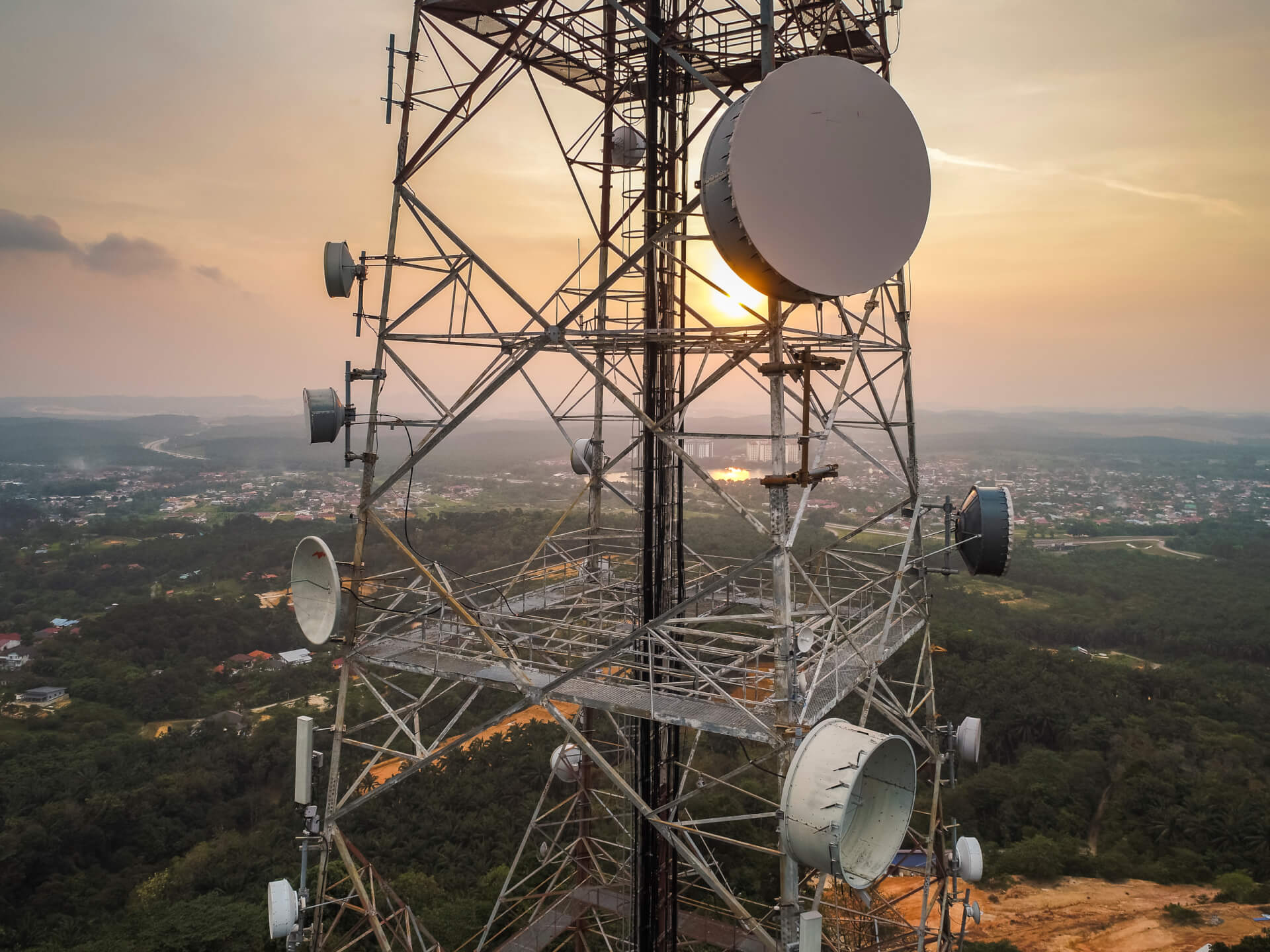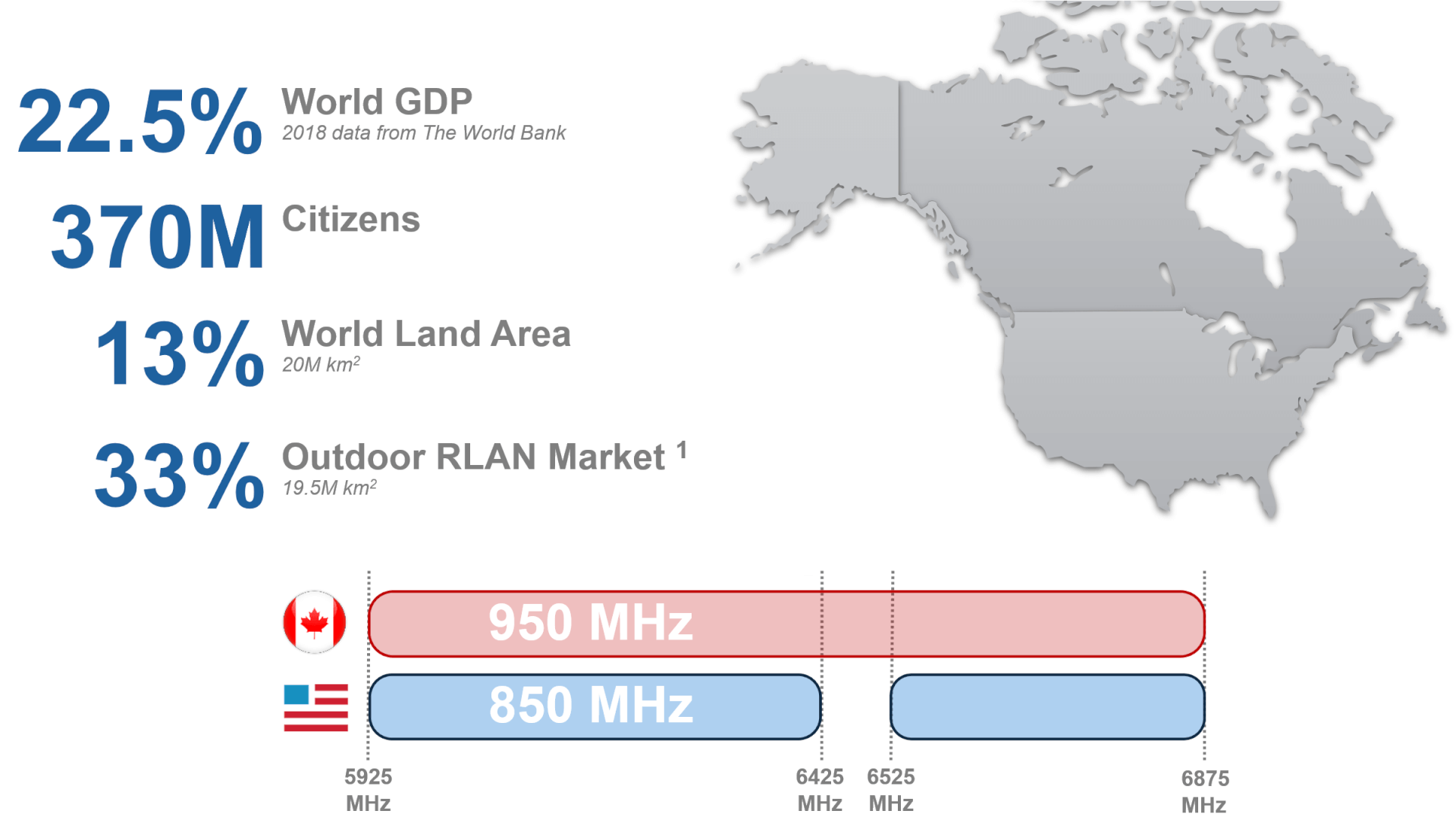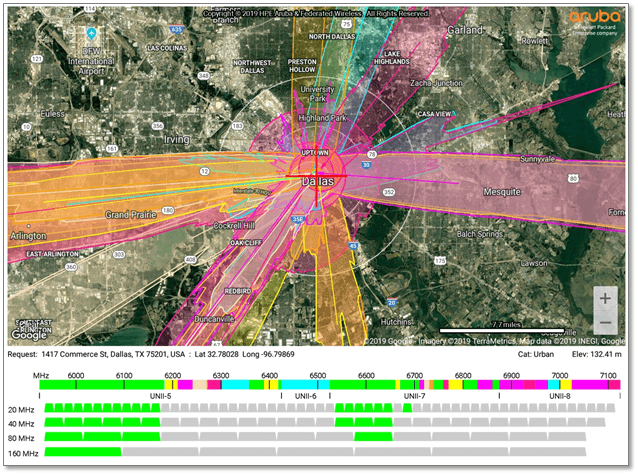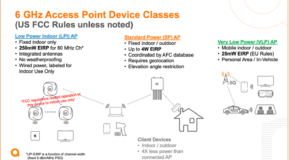
Today Aruba, a Hewlett Packard Enterprise company, announces our selection of Federated Wireless to provide the Automated Frequency Coordination (AFC) service that is required in major countries to operate Aruba’s future outdoor, higher power, and ruggedized radio products in the new 6 GHz band. We are entering into a multi-year and worldwide partnership that will see Federated Wireless’s 6 GHz AFC System incorporated into our Aruba Central cloud management platform for countries with AFC mandates. In the new 6 GHz band, an AFC System is responsible for telling Wi-Fi 6E infrastructure what channels and power levels can safely be used in a particular location to avoid interference with existing licensed incumbents such as fixed microwave links and radio astronomy facilities. AFC is required in the United States and Canada to sell and operate any type of 6 GHz access point that is outdoors, operates above 30 dBm EIRP, or requires external antennas for a particular application. These use cases operate under what is known as the “Standard Power” mode, as a complement to the “Low Power Indoor” (LPI) and “Very Low Power” (VLP) modes that are also being introduced in the new 6 GHz band - with some variance in authorized modes from country to country.
Aruba’s 6 GHz Advocacy
As I’ve written in previous blogs on 6 GHz, Aruba has been at the forefront of advocating for the opening of the 6 GHz band for unlicensed devices in countries all over the world. I’m thrilled to report that, as of this writing, 46 countries – including most recently Colombia – have opened the band for Wi-Fi 6E equipment. Another 39 countries are currently in the midst of a regulatory process that will also open the band with more on the way. These 85 countries are home to 3.8 billion people, nearly 50% of the global population. Most of these countries are starting with LPI equipment in order to protect existing 6 GHz users that are all located outdoors.
Closer to home, the United States and Canada will be the first countries to permit 6 GHz operation outdoors and at the high-power levels typical of enterprise deployments. This operational flexibility is of immense importance to Aruba because we know how critical additional Wi-Fi spectrum is outdoors for our customers across an incredible range of enterprise verticals, government agencies, and military services. The outdoor Wi-Fi market is worth nearly $500M dollars annually, and fully one third of that spending is in North America.[1] As the second largest manufacturer of outdoor Wi-Fi equipment in the world by revenue, we have been pushing hard to get AFC-powered outdoor equipment ready for FCC and ISED evaluation. These two countries are tripling the amount of outdoor spectrum available for unlicensed applications, and we can’t wait to bring it to you.
Figure 1 – The World’s Largest Common Market for Dynamic Spectrum Access

If you’ve been following advances in dynamic spectrum management – in particular Aruba’s announcement last year of products for the Citizens Broadband Radio Service (CBRS) in the United States – you already know the name Federated Wireless. As in the 6 GHz band, equipment operating in CBRS spectrum must protect incumbent users to be deployed. Federated Wireless helped pioneer the automated spectrum database technology that is required in that band and they are a market leader for CBRS Spectrum Access System (SAS) services. Federated Wireless’ deep experience in this complex area, and the proven performance and security of their cloud infrastructure, are key reasons why Aruba has chosen to integrate the Federated Wireless AFC System into our products.
Furthermore, Aruba strongly believes in the importance of a thriving ecosystem of spectrum database providers in order to encourage national regulators around the world to make even more spectrum bands available for sharing on a dynamic basis. This announcement should be seen as Aruba translating that policy vision into a technical delivery architecture that will enable and support millions of products in the field over the next few years. With Canada also planning to consult on CBRS-like operations in the 3900-3980 MHz band – and taken together with 6 GHz and the older TV White Spaces bands that also use database technology – North America represents the largest common market for dynamic spectrum access in the world.
Aruba and Federated Wireless Joint Advocacy of 6 GHz and Wi-Fi 6E
Aruba and Federated Wireless have been working together since 2018 to open the new 6 GHz band for outdoor operation in the United States. We built a prototype system together that used a mobile Android tablet to simulate a virtual Wi-Fi 6E access point as shown in Figure 2 (the red “+” in the center). The tablet interacts in real time with the Federated Wireless cloud AFC system, and served as an early proof point in establishing these systems as viable and economical at enterprise Wi-Fi price points. We jointly demonstrated this system to the FCC in 2019.
Figure 2 – AFC Prototype Co-Developed by Aruba & Federated Wireless in 2019

As my colleague Kurt Schaubach – Federated Wireless’ CTO – noted recently, “This agreement with Aruba demonstrates that AFC technology is not only ready for adoption but also is affordable for manufacturers to integrate into their platforms. Leveraging standard protocols from the Wi-Fi Alliance (WFA) and the proven Federated cloud AFC is the fastest path to market for an industry leader like Aruba.” Kurt’s team is actively engaged alongside Aruba in industry bodies like the WFA and the Wireless Innovation Forum to accelerate development of the standards and certification procedures that will be used to authorize and operate AFC-based equipment. This collaborative approach will serve us well as we enter into the first phase of the FCC’s approval process for AFC systems, with proposals due by November 30th.
The Aruba-Federated Partnership Will Accelerate Wi-Fi 6E Outdoors
To sum up – this agreement is a key milestone on the journey to expand Wi-Fi 6E into outdoor applications like railyards, shipping terminals, university campuses, oil fields, stadiums and airports (just to name a few). Aruba is pleased to join with Federated Wireless in a long-term partnership covering countries worldwide that adopt AFC requirements or authorize Standard Power under other spectrum management regimes, so that we can provide a seamless product experience to our global customer base. The global nature of our partnership should be especially relevant to multinational enterprises that operate outdoor IT infrastructure in numerous jurisdictions and value operational consistency.
While we have made very significant progress since the FCC provisionally approved AFC and Standard Power in April 2020, there is still much to do before AFC and Standard Power APs can be commercially deployed, including the finalization of the certification procedures that the U.S. and Canadian governments will use and the completion of the industry standardization work. The good news is that the great majority of this work should be directly applicable to Standard Power operations in other countries going forward. I look forward to keeping you updated as we progress in that effort.
Resources
Aruba Announces Industry’s First Wi-Fi 6E Access Point
[1] 650 Group 2021 WLAN Market Forecast




